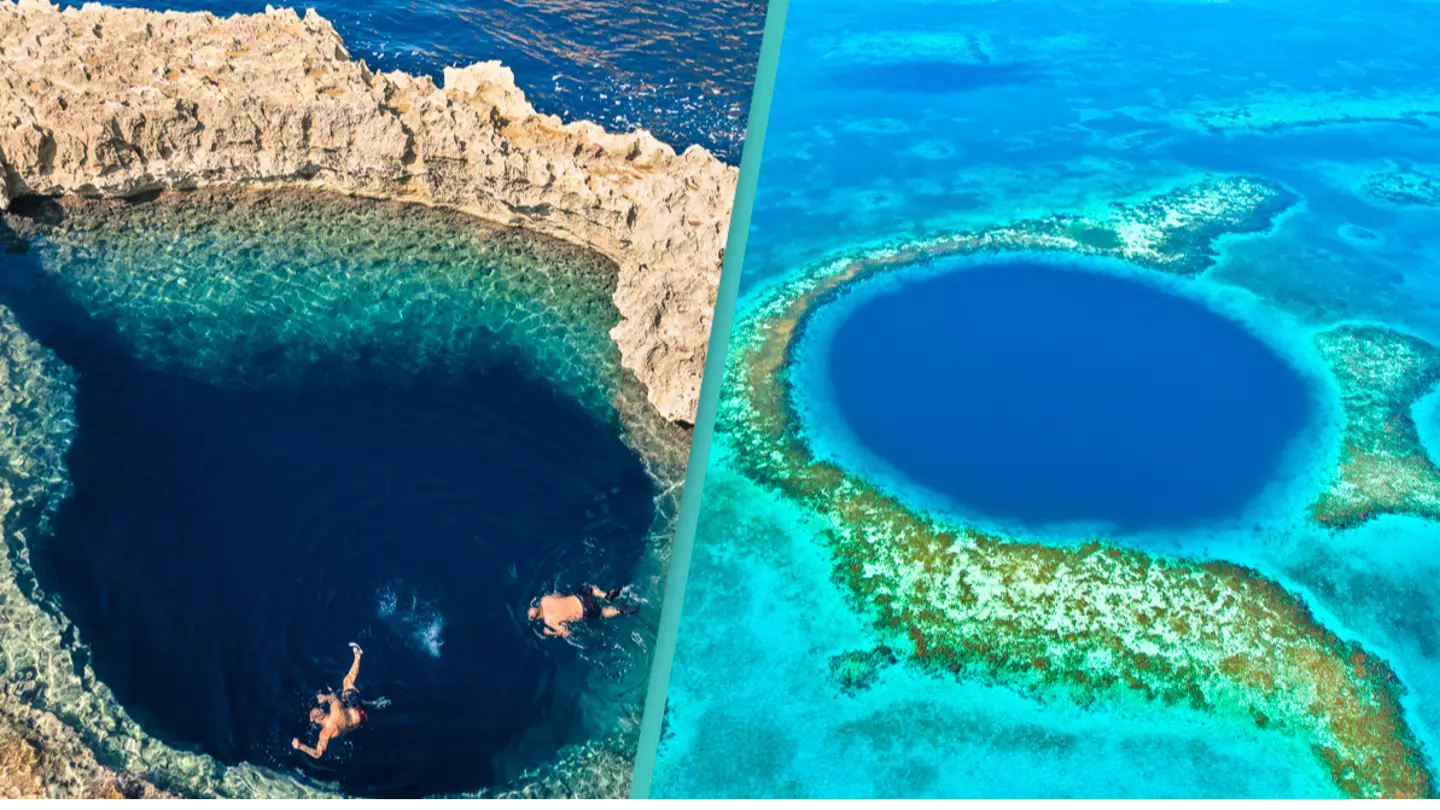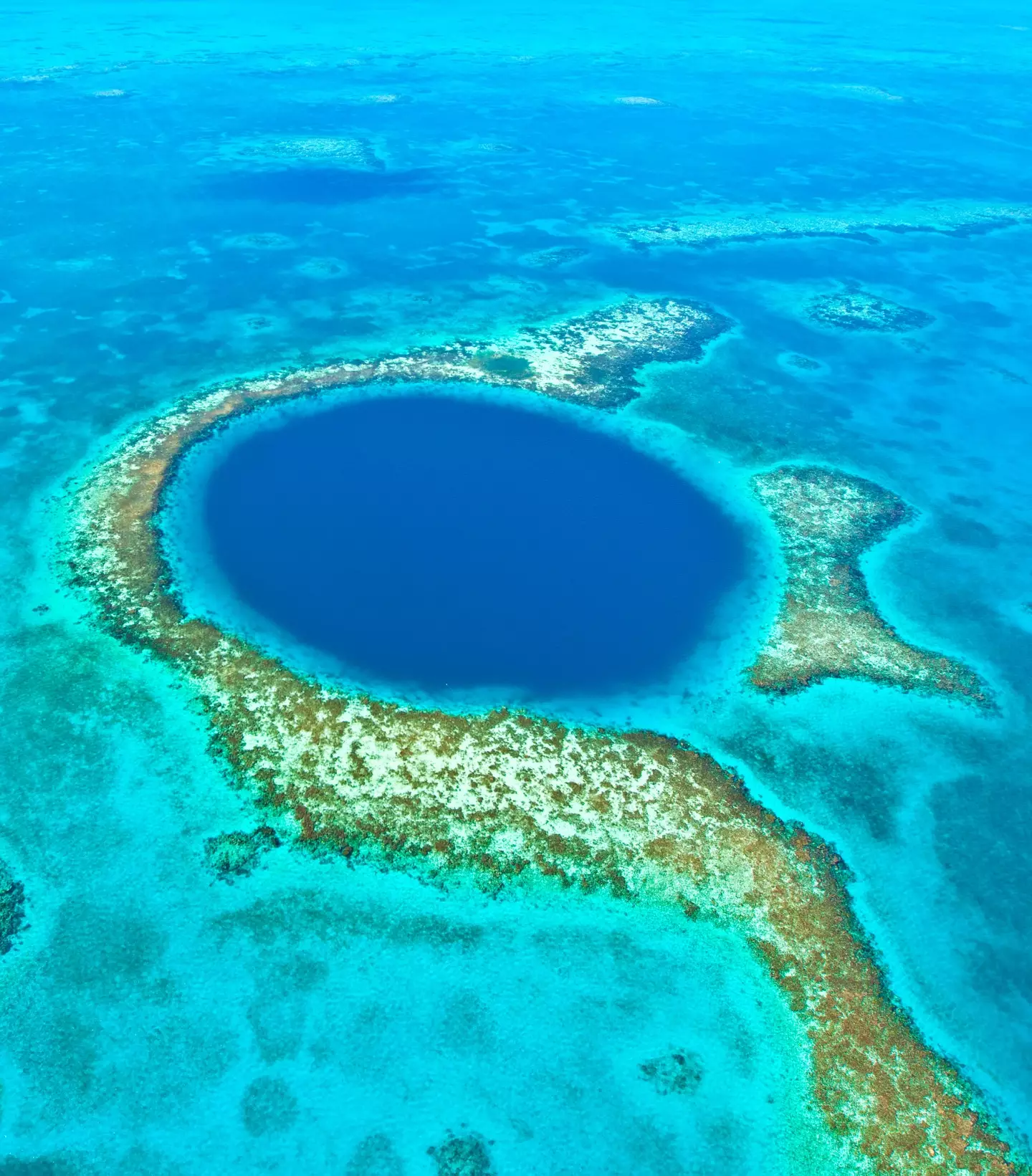
Scientists have discovered the world's second-deepest blue hole near Mexico and it is believed new lifeforms could be discovered.
The new blue hole was nicknamed Taam ja' Blue Hole by scientists, using the Mayan phrase for 'deep water'.
While it was discovered back in 2021, guided by tips from fishermen, scientists from Colegio de le Frontera Sur only recently published their findings in February of this year.
Advert
According to the National Oceanic and Atmospheric Association (NOAA), these underwater sinkholes made of calcium carbonate (karst) rock are 'ecological hotspots'.
NOAA explained: "Blue holes are diverse biological communities full of marine life including corals, sponges, mollusks, seat turtles, sharks, and more."
This particular tropical estuary lies off the southeastern coast of the Yucatan Peninsula of Mexico, spanning 147,000 square feet across and descending approximately 900 feet down with a circular opening just 15 feet below sea level.

The only other deeper blue hole we know about is the Dragon Hole, located in the South China Sea, which is 987.2 feet deep.
Advert
According to Live Science, the south-eastern coast of the peninsula is rich with fascinating geology, like the world’s biggest underwater cave, Sistema Sac Actun.
The Taam ja' Blue Hole is close to the Chicxulub Crater, formed by an asteroid thought to have caused the Cretaceous-tertiary extinction of dinosaurs 66 million years ago.
According to researchers' findings published in Frontiers in Marine Science, the steep 80-degree-plus sloping sides of Taam ja' form a conic structure, making the microbial diversity of its biofilms, sediments, limestone, and gypsum ledges an intriguing possibility.
Studying the microbial diversity on these ledges could offer a glimpse into the type of lifeforms that are able to survive in this unique deep-water environment.
Advert
Our knowledge of blue holes is limited by their small openings, expansive depth and limited oxygen in the water - meaning specialised equipment is required.

The karst walls and submerged opening of the underwater sinkholes block tidal flows, making it a unique environment for life - with the study explaining that within it, properties of water 'change significantly with temperature and salinity gradients'.
The hydrographic profiles of Taam ja' also show a layered water column, which means a low-oxygen layer sits above a gas-heavy layer above another layer with very low oxygen levels.
Advert
Instead of destroying all life, this means the environment is home to more extreme biology that thrives in low-oxygen conditions.
Scientists are keen to explore the depths of blue holes to learn more about how their environment supports the unique ecosystems that lurk beneath the surface.
Topics: News, Science, World News
